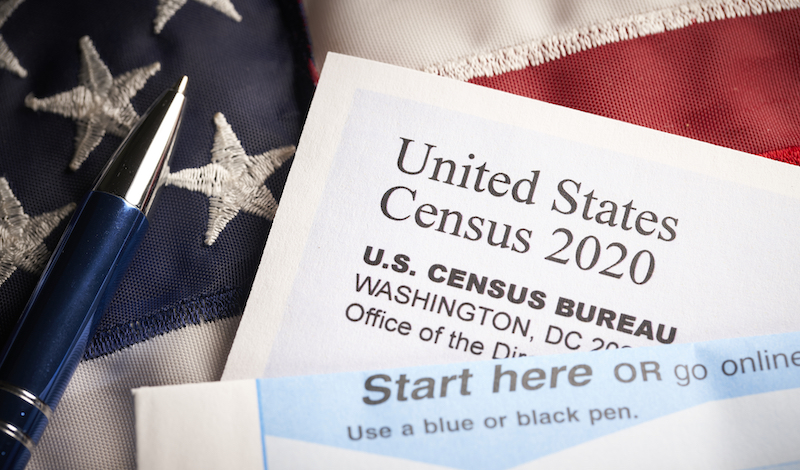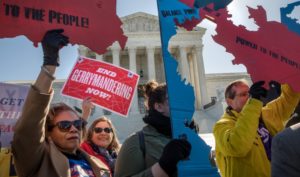
The U.S. Census Bureau should count incarcerated people where they are from—not where they are incarcerated.
Most Americans likely know about gerrymandering, a practice in which state officials redraw district lines to include households that favor a certain political party. But one of the lesser-known forms of gerrymandering involves entities far different than households: prisons.
In a process called prison gerrymandering, or prison-based malapportionment, incarcerated people are counted for redistricting purposes in the district where they are incarcerated rather than their home districts. As a result, states have drawn district lines to boost certain localities by including prisons in those population counts.
The United States incarcerates 2 million people—the largest prison population of any country. Given this incarceration rate, prison gerrymandering can skew population counts at the expense of the incarcerated. For example, 80 percent of one district in Juneau County, Wisconsin consists of incarcerated people.
Because states often locate correctional facilities in rural areas, these facilities relocate individuals from urban, racially diverse districts, to rural, predominately white districts. The result: Rural areas with prisons receive a considerable increase in population, an artificial boost that does not reflect the actual population of the area.
Two professors at Villanova University, Brianna Remster and Rory Kramer, argue that this phenomenon distorts democracy in two ways.
First, prison gerrymandering leads to political misrepresentation. Districts with prisons increase their population count and, according to the Prison Policy Initiative, gain a political edge over districts without prisons. At the same time, the home districts of incarcerated people lose that population count, which undercuts those communities.
Second, prison gerrymandering leads to voter inequality. Because incarcerated individuals generally cannot vote, counting individuals where they are incarcerated concentrates more voting power in the hands of eligible voters in that prison’s district—which are likely to be rural, white, and conservative-leaning.
Prison gerrymandering is a complex problem that exists across the nation. But it can be solved with one fairly simple regulatory move: the U.S. Census Bureau can modify how it counts incarcerated people.
Since 1790, the U.S. Census Bureau has counted people according to their “usual residence.” The Bureau has interpreted that definition to mean “where people eat and sleep most of the time.” Moreover, the prison population is part of a larger census category called “group quarters.” This category includes group living arrangements such as college students, military personnel, and nursing homes. As with the incarcerated population, the Bureau usually counts those groups where the group facilities are located—college dormitories, military bases, and so on.
But prisons differ from those examples in important ways. One difference is the concept of enduring ties to the community. Not only are incarcerated people excluded from the communities in which they are imprisoned, but they also maintain close ties with their home districts. In the context of employees temporarily abroad, the U.S. Supreme Court broadened the understanding of usual residence to include “more than mere physical presence … but some element of allegiance or enduring tie to a place.”
Consistent with this expanded definition, incarcerated people should be counted in their home districts.
Since 2010, the Census Bureau has considered the unique problem that prisons pose to its usual-residence definition. In 2016, it solicited comments about changing the definition when it comes to incarcerated people. The public comments the Bureau received presented many arguments in favor of making a modification. But the Bureau has maintained its position that incarcerated people should be counted where they are incarcerated, citing the language of the usual-residence rule.
Instead of reforming its counting mechanism, the Bureau has passed the responsibility to the states. In 2011, it released its data earlier than originally scheduled so that states could change the method of counting the incarcerated population. The Bureau also has pledged to release a tool that states can use to facilitate this process.
Many states have used this data to resolve the effects of prison gerrymandering. Twelve states so far have enacted laws to count incarcerated people in their home districts. Most of those states apply the modification to both state legislative districts and congressional districts.
Although an important step, state-based reforms lead to a patchwork of inconsistent policies. They also take time and political energy to pass. Even if a state seeks to reform its counting mechanism, the burden is on the state to take the Census Bureau’s data and rework the count.
Moreover, states that continue to use the Bureau’s definition can easily argue that they are not necessarily at fault. They are, after all, merely following federal standards. But the existence of such an argument only underscores the need for a change in the federal standards.
Reforms at the federal level have received some traction, but not enough to overcome the gridlock in Congress. In the past, some legislators proposed bills that addressed prison gerrymandering specifically—none of which moved far along in the political process. Perhaps the most promising effort was Section 2701 of the proposed For the People Act, which passed the House in 2021. But the bill continues to be blocked in the Senate with little chance of enactment.
Which brings the issue back to the Census Bureau—the agency empowered to solve this problem directly. It has solicited comments, recognized the issue, and changed the timeline of its data release to accommodate states that want to rid themselves of prison gerrymandering. But without further federal action to create a nationwide standard, most states will continue to endure the effects of prison gerrymandering. The Bureau should uphold democratic principles and reform its counting of incarcerated people.



